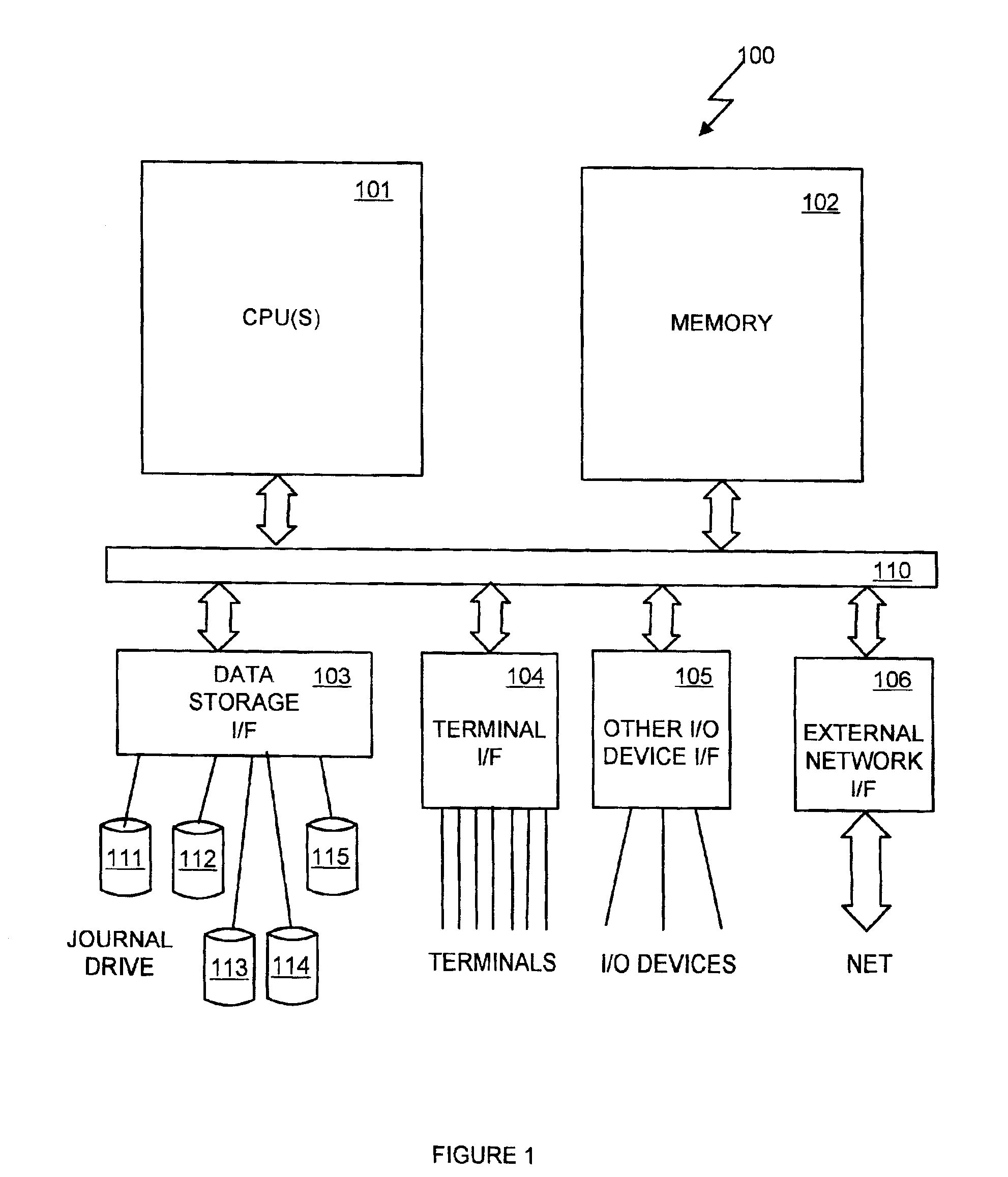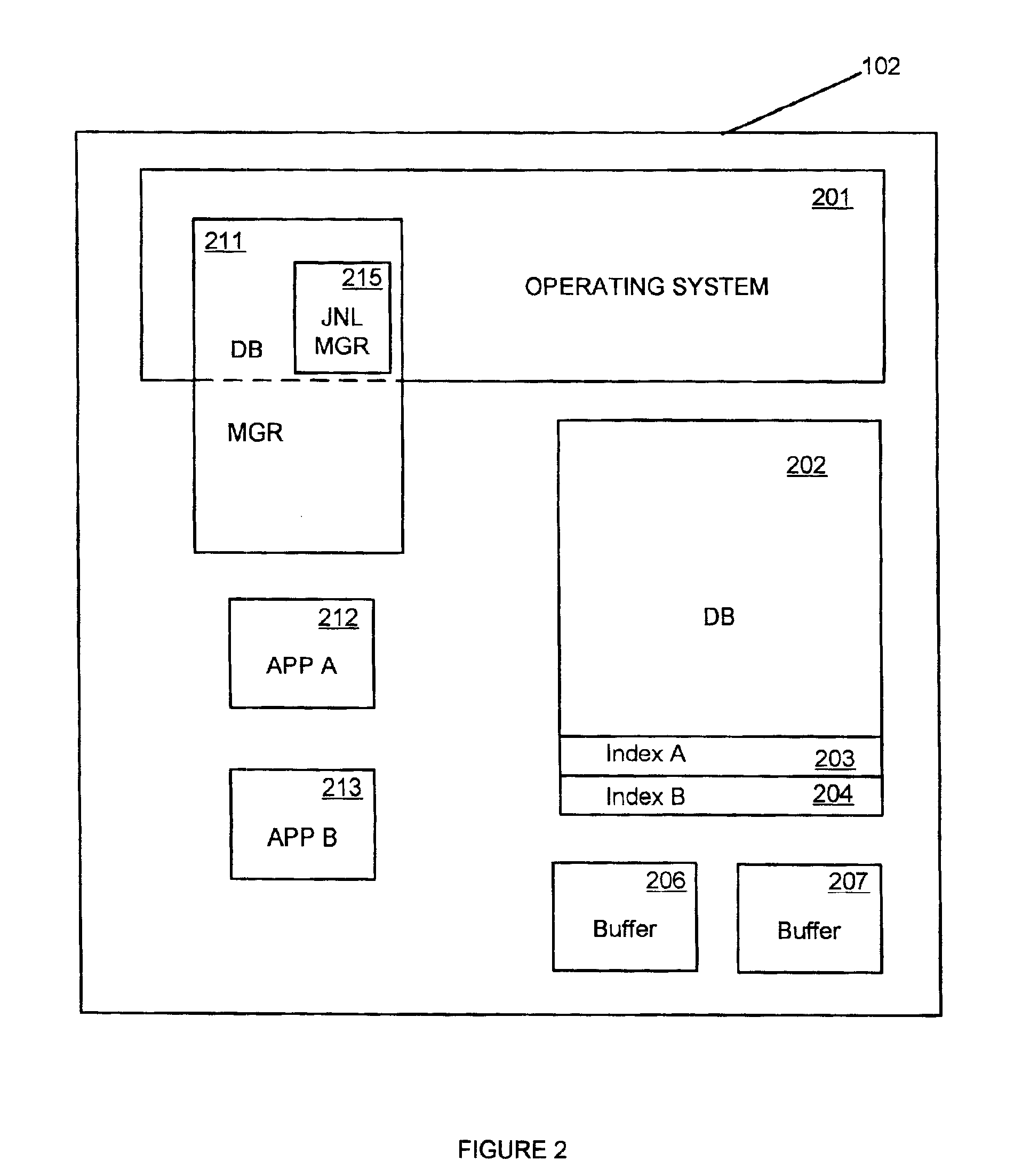Method and apparatus for selective caching of transactions in a computer system
a computer system and transaction processing technology, applied in the field of digital data processing, can solve the problems of imposing additional workload on the cpu, affecting system performance, and complex computer system, and achieve the effect of reducing the performance burden of write operations to the journal
- Summary
- Abstract
- Description
- Claims
- Application Information
AI Technical Summary
Benefits of technology
Problems solved by technology
Method used
Image
Examples
Embodiment Construction
[0023]Referring to the Drawing, wherein like numbers denote like parts throughout the several views, FIG. 1 shows a high-level block diagram of a computer system 100 acting as a repository of database information, consistent with the preferred embodiment. Computer system 100 comprises one or more central processing unit (CPUs) 101, main memory 102, data storage interface 103, terminal interface 104, I / O device interface 105, and external network interface 106. The various devices communicate with each other via internal communications bus 110. CPU 101 is a general-purpose programmable processor, executing instructions stored in memory 102; while a single CPU is shown in FIG. 1, it should be understood that computer systems having multiple CPUs could be used. Memory 102 is a random-access volatile memory for storing data and programs; memory is shown conceptually as a single monolithic entity, it being understood that memory is often arranged in a hierarchy of caches and other memory...
PUM
 Login to View More
Login to View More Abstract
Description
Claims
Application Information
 Login to View More
Login to View More - R&D
- Intellectual Property
- Life Sciences
- Materials
- Tech Scout
- Unparalleled Data Quality
- Higher Quality Content
- 60% Fewer Hallucinations
Browse by: Latest US Patents, China's latest patents, Technical Efficacy Thesaurus, Application Domain, Technology Topic, Popular Technical Reports.
© 2025 PatSnap. All rights reserved.Legal|Privacy policy|Modern Slavery Act Transparency Statement|Sitemap|About US| Contact US: help@patsnap.com



